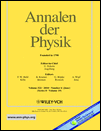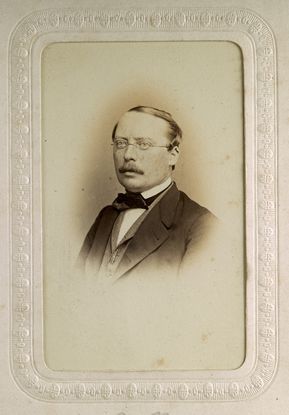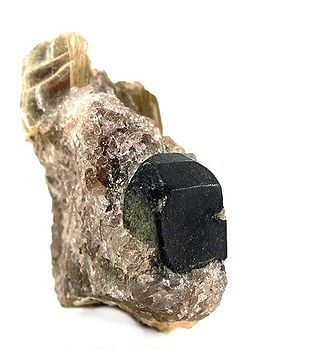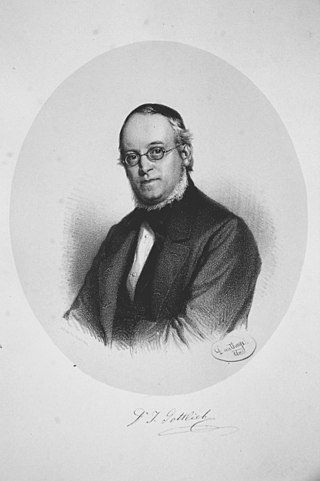Related Research Articles

Adolph Wilhelm Hermann Kolbe was a major contributor to the birth of modern organic chemistry. He was a professor at Marburg and Leipzig. Kolbe was the first to apply the term synthesis in a chemical context, and contributed to the philosophical demise of vitalism through synthesis of the organic substance acetic acid from carbon disulfide, and also contributed to the development of structural theory. This was done via modifications to the idea of "radicals" and accurate prediction of the existence of secondary and tertiary alcohols, and to the emerging array of organic reactions through his Kolbe electrolysis of carboxylate salts, the Kolbe-Schmitt reaction in the preparation of aspirin and the Kolbe nitrile synthesis. After studies with Wöhler and Bunsen, Kolbe was involved with the early internationalization of chemistry through work in London. He was elected to the Royal Swedish Academy of Sciences, and won the Royal Society of London's Davy Medal in the year of his death. Despite these accomplishments and his training important members of the next generation of chemists, Kolbe is best remembered for editing the Journal für Praktische Chemie for more than a decade, in which his vituperative essays on Kekulé's structure of benzene, van't Hoff's theory on the origin of chirality and Baeyer's reforms of nomenclature were personally critical and linguistically violent. Kolbe died of a heart attack in Leipzig at age 66, six years after the death of his wife, Charlotte. He was survived by four children.

Annalen der Physik is one of the oldest scientific journals on physics; it has been published since 1799. The journal publishes original, peer-reviewed papers on experimental, theoretical, applied, and mathematical physics and related areas. The editor-in-chief is Stefan Hildebrandt. Prior to 2008, its ISO 4 abbreviation was Ann. Phys. (Leipzig), after 2008 it became Ann. Phys. (Berl.).

Clemens Alexander Winkler was a German chemist who discovered the element germanium in 1886, solidifying Dmitri Mendeleev's theory of periodicity.

Ferdinand Reich was a German chemist who co-discovered indium in 1863 with Hieronymous Theodor Richter.

Hieronymus Theodor Richter was a German chemist.
The Kolbe–Schmitt reaction or Kolbe process is a carboxylation chemical reaction that proceeds by treating phenol with sodium hydroxide to form sodium phenoxide, then heating sodium phenoxide with carbon dioxide under pressure, then treating the product with sulfuric acid. The final product is an aromatic hydroxy acid which is also known as salicylic acid.

Aurin, sometimes named rosolic acid or corallin is an organic compound, forming yellowish or deep-red crystals with greenish metallic luster. It is practically insoluble in water, freely soluble in alcohol. It is soluble in strong acids to form yellow solution, or in aqueous alkalis to form carmine red solutions.

Triphylite is a lithium iron(II) phosphate mineral with the chemical formula LiFePO4. It is a member of the triphylite group and forms a complete solid solution series with the lithium manganese(II) phosphate, lithiophilite. Triphylite crystallizes in the orthorhombic crystal system. It rarely forms prismatic crystals and is more frequently found in hypidiomorphic rock. It is bluish- to greenish-gray in color, but upon alteration becomes brown to black.
Pelopium was the proposed name for a new element found by the chemist Heinrich Rose in 1845. The name derived from the Greek king and later god Pelops, son of Tantalus. During the analysis of the mineral tantalite he concluded that it does contain an element similar to niobium and tantalum. The similar reactivity of niobium and tantalum complicated preparation of pure samples and therefore several new elements were proposed, which were later found to be mixtures of niobium and tantalum.

Biuret is a chemical compound with the chemical formula HN(CONH2)2. It is a white solid that is soluble in hot water. A variety of organic derivatives are known. The term "biuret" also describes a family of organic compounds with the chemical formula R1R2N−C(=O)−N(R3)−C(=O)−NR4R5, where R1, R2, R3, R4 and R5 are hydrogen, organyl or other groups. Also known as carbamylurea, it results from the condensation of two equivalents of urea. It is a common undesirable impurity in urea-based fertilizers, as biuret is toxic to plants.

The Zincke reaction is an organic reaction, named after Theodor Zincke, in which a pyridine is transformed into a pyridinium salt by reaction with 2,4-dinitro-chlorobenzene and a primary amine.

Johann Gottlieb was an Austrian chemist who first synthesized Propionic acid. He is also known for describing and naming Paramylon.

Mellitic anhydride, the anhydride of mellitic acid, is an organic compound with the formula C12O9.
Ilmenium was the proposed name for a new element found by the chemist R. Hermann in 1847. During the analysis of the mineral samarskite, he concluded that it does contain an element similar to niobium and tantalum. The similar reactivity of niobium and tantalum complicated preparation of pure samples of the metals and therefore several new elements were proposed, which were later found to be mixtures of niobium and tantalum.
Dianium was the proposed name for a new element found by the mineralogist and poet Wolfgang Franz von Kobell in 1860. The name derived from the Roman goddess Diana. During the analysis of the mineral tantalite and niobite he concluded that it does contain an element similar to niobium and tantalum. The symbol was Di.
Gnomium was the proposed name for a new element similar to nickel and cobalt. Gerhard Krüss and F. W. Schmidt thought that existence of this element would solve an apparent problem in the periodic table.
Herman Rudolf Günsberg (1827–1879) was a chemist originating in Pidkamin, near Brody who distinguished himself by his fostering of the economic development of Galicia.

Conhydrine is a poisonous alkaloid found in poison hemlock in small quantities.

Jakub Natanson was a Polish chemist and banker, one of the discoverers of Fuchsine. He wrote the first textbook on organic chemistry in the Polish language.
References
- ↑ Bahr, J. F. (1863). "Ueber ein neues Metalloxyd". Annalen der Physik und Chemie. 195 (8): 572. Bibcode:1863AnP...195..572B. doi:10.1002/andp.18631950804.
- ↑ Bahr, J. F. (1864). "Ueber Wasiumoxyd, ein neues Metalloxyd". Journal für Praktische Chemie. 91 (1): 179. doi:10.1002/prac.18640910130.
- ↑ Delafontaine, M. (1864). "Ueber das Wasium". Annalen der Chemie und Pharmacie. 131 (3): 368–372. doi:10.1002/jlac.18641310316.
- ↑ "Notizen". Journal für Praktische Chemie. 91 (1): 316–320. 1864. doi:10.1002/prac.18640910151.
- ↑ "Wasium". Archiv der Pharmazie. 170 (3): 254. 1864. doi:10.1002/ardp.18641700345. S2CID 221460105.
- ↑ Samuel Joseph Mackie (1864), The Geologist, Volume 7 , retrieved October 3, 2013
- ↑ Wasium, 1913, retrieved October 3, 2013